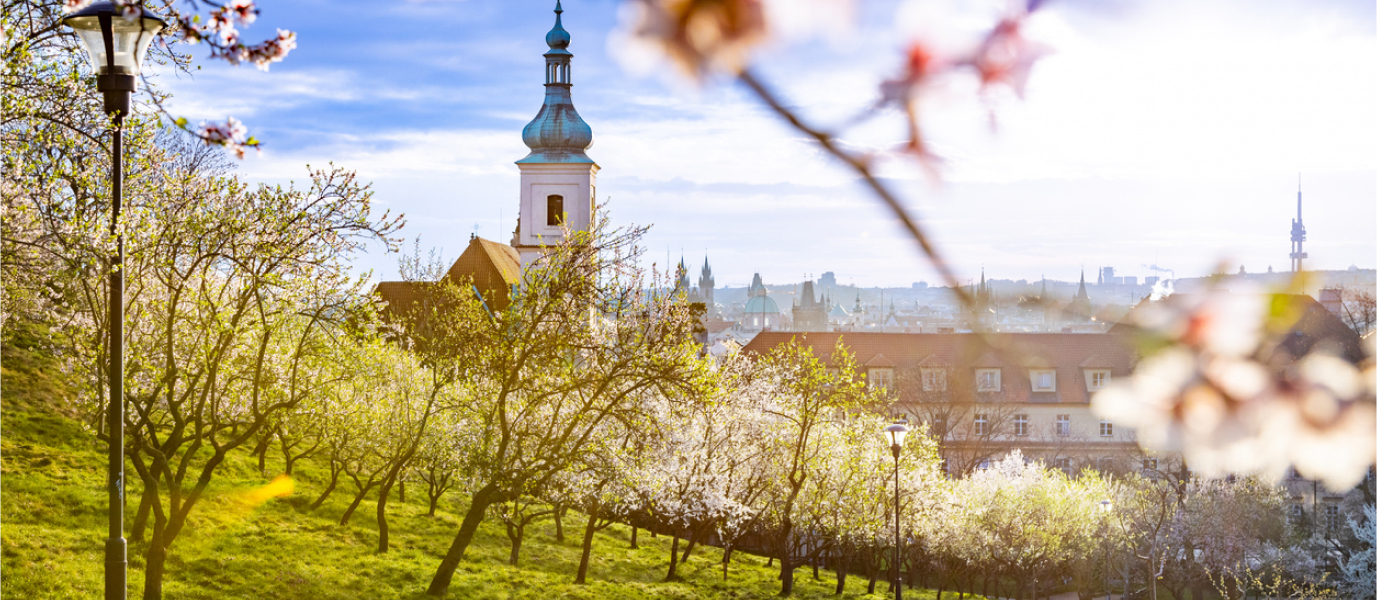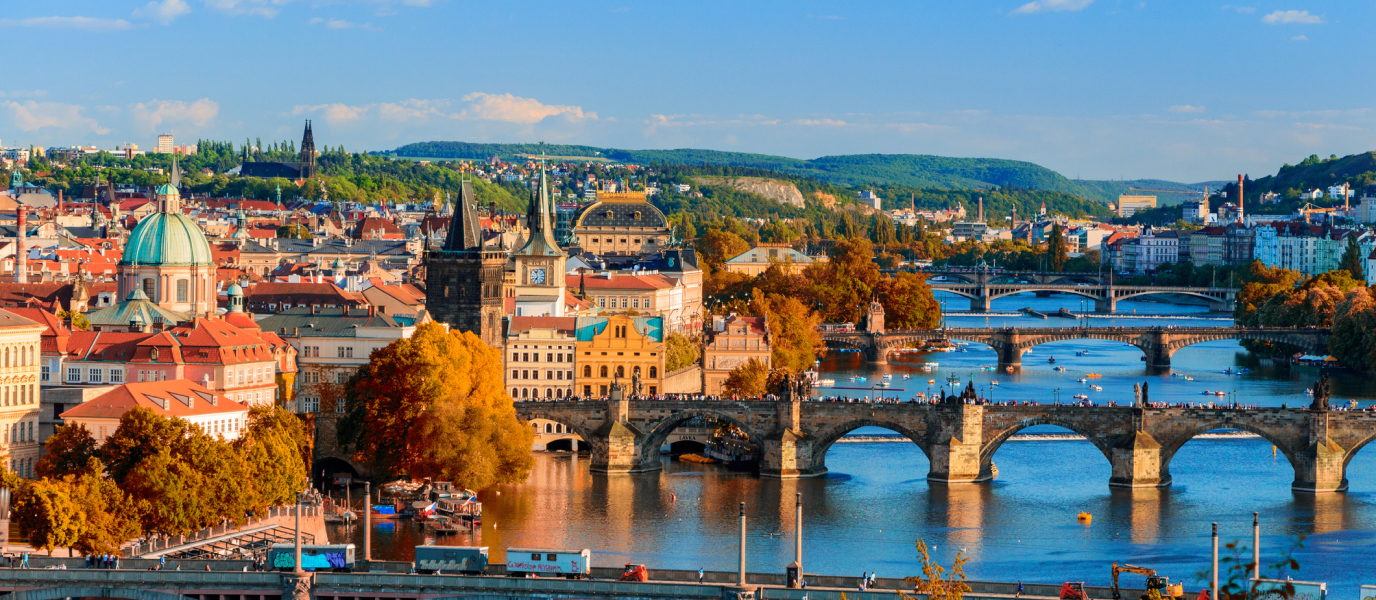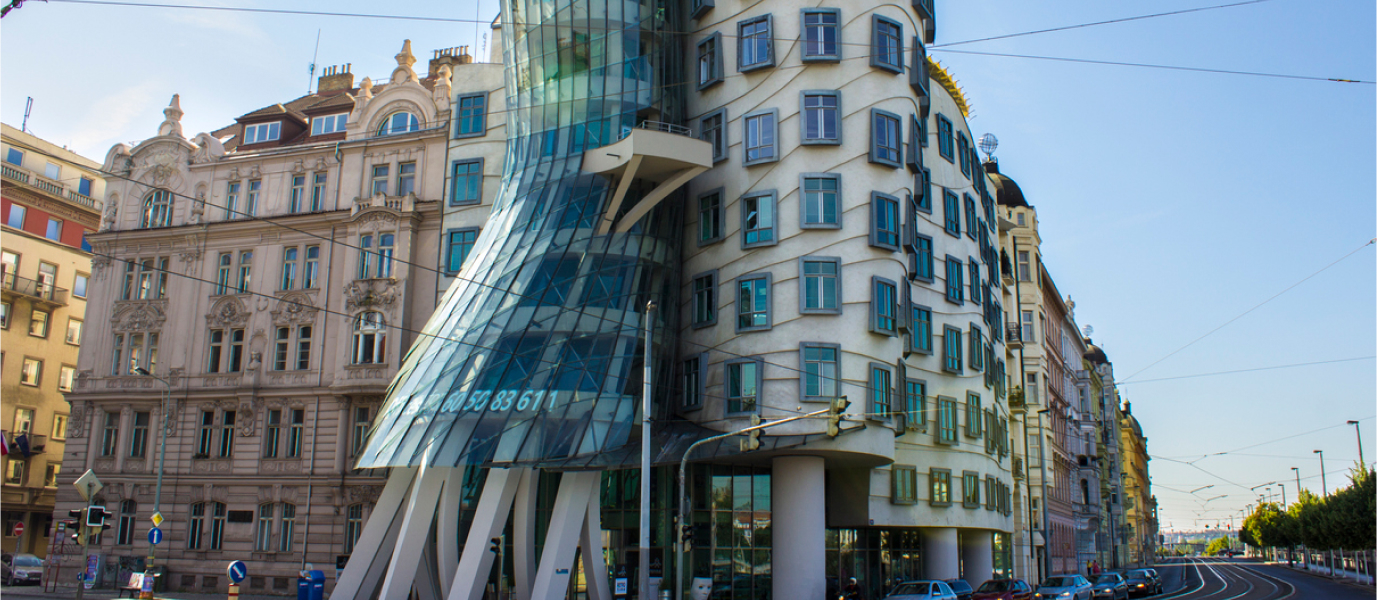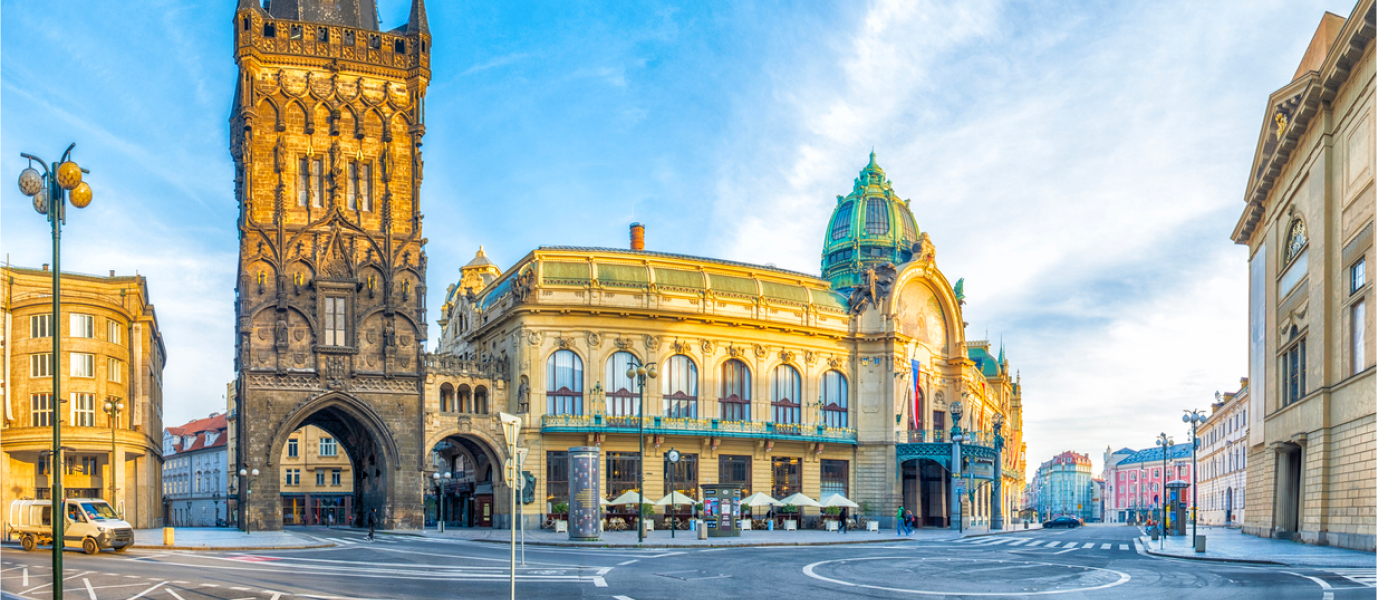Enjoying a picnic with the finest views of Prague in a park with lush vegetation and winding paths has lots of appeal, especially after a tiring day exploring the Czech capital. However, don’t be fooled into thinking that Petřín Hill only offers beautiful views of the city. Petřín Hill also offers a range of cultural and scientific activities, which will delight those who prefer doing something a bit different on their holidays: astronomical observatories, lookout towers steeped in history, a fascinating mirror maze and a hundred-year-old beer garden are just some of the things that make this park, which lies at an altitude of over 300 metres, a perfect destination for both people travelling alone and families with children.
What to do on Petřín Hill in Prague
A veritable forest full of holm oaks, beech trees and chestnut trees, Petřín Hill is a great place for a stroll. Back in the day, the hillside was covered in vineyards.
Many of the features that can still be enjoyed in the park today are remnants of Prague’s General Land Centennial Exhibition in 1891, among them, the funicular, the lookout tower and Bludiště (the mirror maze).
Petřín Park and the funicular
There are many ways to get to the top of Petřín Hill, but perhaps the most interesting and impressive is the funicular, the oldest cable railway in the Czech Republic. Inaugurated in 1891 for the Prague Exhibition, it has a length of 510 metres. Along the way it offers incredible views of Prague, although if you only want to catch it in one direction, we recommend doing so on your way back from the park and, if possible, after dark, when views of the Czech capital are at their most spectacular.
The funicular that goes to the top of Petřín Hill can be caught in front of number 36 Újezd Street, a little further along from Legií Bridge.
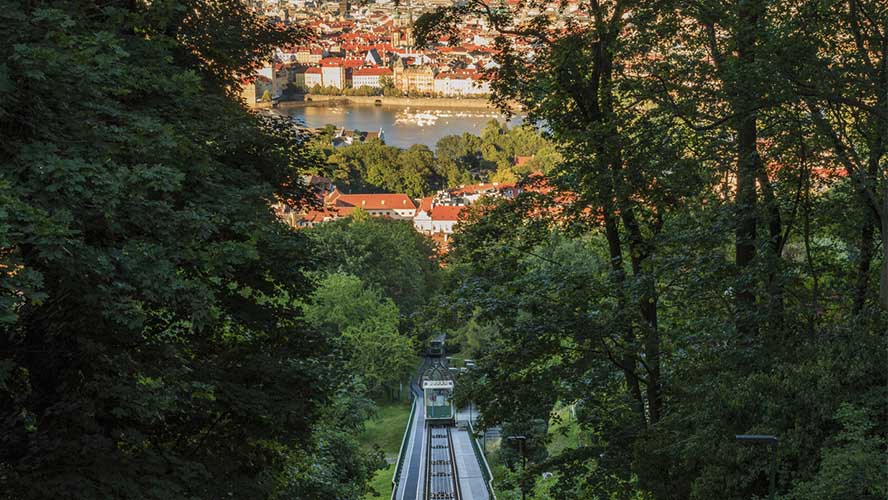
Petřín Lookout Tower
From the top of this smaller version of the Eiffel Tower you can enjoy what are, without a doubt, the finest views of Prague as well as the forests of the Central Bohemia Region, weather permitting of course.
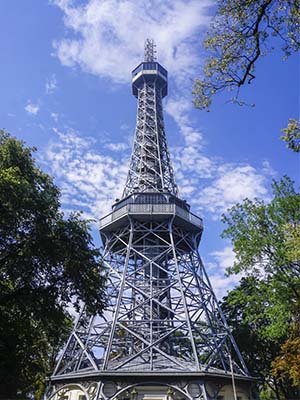
Just like the funicular it was built in 1891 replicating the Eiffel Tower in Paris, which was inaugurated two years before. Its height of 62 metres is no accident: if you include the altitude of the hill on which it is situated, the structure stands at an elevation of 300 metres, similar to that of the Eiffel Tower. It has 299 steps, although there is also a lift.
Bludiště, the mirror maze
Very close to the Petřín Lookout Tower is this pavilion built for the 1891 Exhibition, albeit in a different location, which served as inspiration for the Vienna Prater, the famous amusement park in the Austrian capital. These days Bludiště houses a mirror maze as well as an impressive diorama recreating the battle that freed the people of Prague from the Swedes on Charles Bridge in 1648.
Hunger Wall
Interestingly, an unusual wall, which has now been restored, was built in the area during the fourteenth century by order of the great Emperor Charles IV. The wall runs the length of Petřín Park, stretching from Vltava River, close to Újezd station, to the area around Strahov Monastery, in Hradčany. The top of the wall boasts pinnacles, embrasures, outer walkways and bastions, one of which forms the base of the dome of Štefánik Observatory (see below). Back in the day the wall had a height of up to 4.5 metres and a width of 1.8 metres.
Far from being a defensive structure against hypothetical invaders, Charles IV ordered for the wall to be built to fight against a much more catastrophic enemy: hunger. As a consequence of the great famine that the region suffered in the mid-fourteenth century, the emperor employed the poorest people to build it in order to give them work and a salary to feed their loved ones. The wall was built between 1360 and 1362 and the emperor has been remembered, since then, in the collective memory of Prague’s people, as a good, generous king.
Štefánik Observatory
If you take the funicular you can access this fascinating astronomical observatory, whose 650-mm telescope allows for solar observation (sun spots, corona, etc.) in daylight, and planetary, lunar and stellar observation after nightfall. What’s more, it also has a range of ancient calculation and observation tools on display, as well as beautiful photographs of the cosmos, and provides educational information on how the famous Astronomical Clock in the Old Town works. It’s not unusual to see students frolicking on the well-cared-for lawn in its surroundings.




































































